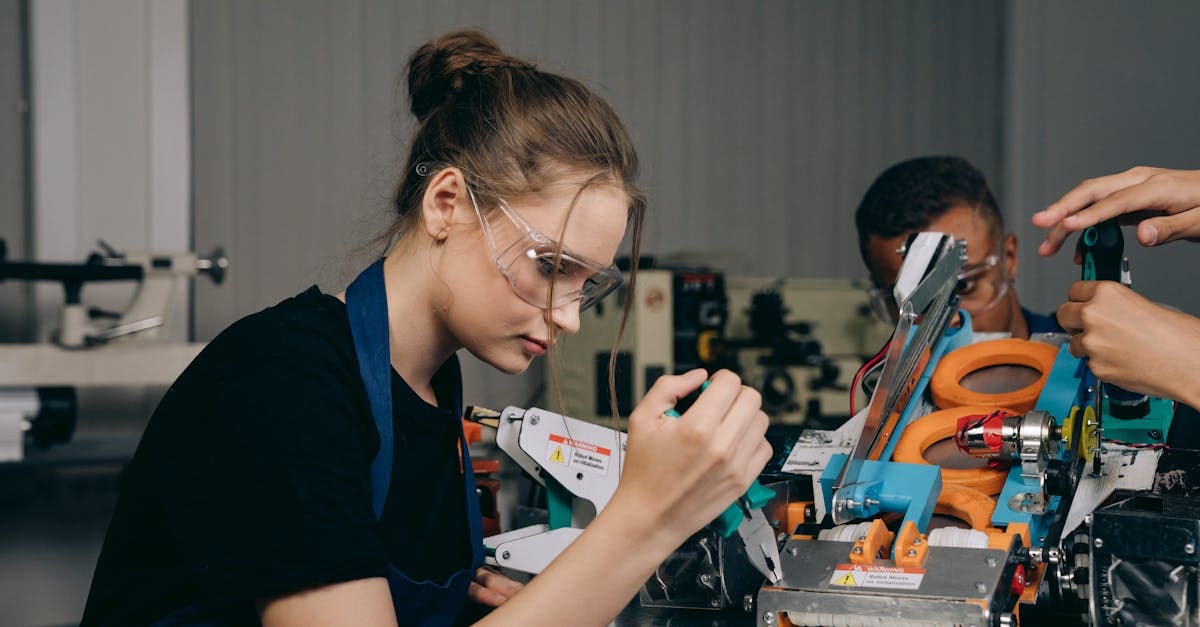How to Get More from Your Cobotics Investment
I’ve seen manufacturers spend thousands on cobotics only to watch their expensive collaborative robots sit idle or perform basic tasks far below their capabilities. When I invested in my first cobot, I made every mistake in the book-improper placement, inadequate training for my team, and no clear integration strategy. The result? A fancy machine gathering dust instead of boosting productivity. Many manufacturers face this same challenge: how to transform these sophisticated robots from impressive technology demonstrations into genuine profit generators.
The manufacturing landscape has changed dramatically. With labor shortages, demands for greater flexibility, and increasing pressure to reduce costs, my experience shows that cobots can deliver tremendous value-but only when implemented strategically. The key difference between disappointment and success lies in how you approach human-robot interaction, sensor utilization, and production integration. Companies that master these elements see payback periods shrink from years to months, with productivity increases of 10-20 times compared to conventional methods.
Read on to discover the practical steps I’ve learned to maximize your robotics investment. These aren’t theoretical concepts but tested approaches that transformed my factory operations and can do the same for yours.

Photo provided by Mikhail Nilov on Pexels
In the article
- Understanding Cobotics for Maximum Return on Investment
- Optimizing Your Factory Robotics Implementation
Understanding Cobotics for Maximum Return on Investment
I’ve been exploring the world of cobotics recently, and I’m amazed at how these robots differ from traditional automation. Collaborative robots aren’t meant to replace humans in the workplace. Instead, they work alongside us, creating a partnership that enhances what both can do.When I first saw a cobot in action, I was struck by its design. These machines feature six pivoting joints with a 360-degree range of motion that allows them to move much like a human arm. What makes them truly special is their built-in safety features. Unlike their industrial counterparts, cobots can detect when they bump into something (or someone) and stop immediately.One of the biggest advantages I’ve found is that collaborative robots don’t need protective cages. Traditional industrial robots require safety barriers because they can’t sense humans nearby. Cobots, on the other hand, are designed with human augmentation and workplace safety in mind from the start.I’ve noticed these robots come in various payload capacities to handle different tasks. Some can lift just a few pounds for delicate assembly work, while others can move heavier items up to 20kg. This flexibility makes them suitable for many applications across manufacturing.
Key Applications of Cobotics in Modern Manufacturing
In my research, I’ve discovered that implementing cobots for specific high-value tasks yields the best results. Material handling and machine loading are perfect examples. These repetitive jobs often cause strain for human workers but are ideal for cobots.I was particularly interested in how cobots integrate with Automated Storage and Retrieval Systems. This combination creates a powerful workflow where cobots can access parts continuously without human intervention, enabling overnight operations that boost productivity significantly.For delicate assembly requiring precision, human-robot interaction creates an effective partnership. The human provides judgment and dexterity for complex parts, while the cobot handles repetitive movements or holds components in place.Quality inspection is another area where I’ve seen cobots excel. With integrated vision systems, they can examine products consistently without the fatigue human inspectors experience. This leads to fewer defects reaching customers.What impressed me most was how cobots take on repetitive tasks that cause ergonomic strain. By letting machines handle these movements, factory automation reduces workplace injuries and allows workers to focus on more valuable activities.

Photo provided by Mikhail Nilov on Pexels
Optimizing Your Factory Robotics Implementation
When I decided to explore cobotics for my operations, my first challenge was selecting the right system. I quickly learned that matching capabilities to specific manufacturing challenges is crucial for success.I spent time comparing top brands in the market. Universal Robots seemed to be the most established, but Franka Emika offered impressive sensitivity with over 100 sensors, and Techman stood out with their integrated vision systems. Each had different strengths depending on the application.Evaluating end-of-arm tooling options was my next step. The variety of grippers, dispensers, and specialized tools available amazed me. I realized that industrial automation requires careful consideration of these attachments since they determine what tasks your cobot can perform.I had to consider payload requirements and workspace limitations carefully. Some of my applications needed robots that could lift heavier items, while others required a longer reach. Taking measurements of my work area helped me avoid choosing a cobot that wouldn’t fit where I needed it.The programming complexity and user interface became important factors in my decision. Some systems offered intuitive programming through hand-guiding, while others required more technical knowledge. I wanted something my team could learn to program quickly.Planning for adaptive robotics that can handle various tasks proved to be a smart approach. Rather than buying single-purpose machines, I looked for cobots that could be repurposed as my needs changed.
Measuring Productivity Enhancement Through Industrial Automation
To justify my cobotics investment, I needed to track ROI metrics carefully. The numbers surprised me – some applications showed a 10-20x productivity increase through unattended operation. This was especially true when cobots worked overnight without human supervision.What I found most promising was that first-year ROI is possible with strategic implementation. By focusing on high-value applications first, I could recover my investment quickly and then expand to other areas.Improved workplace safety became an unexpected benefit. My team experienced reduced repetitive strain injuries after we implemented cobots for the most physically demanding tasks. This manufacturing AI integration improved overall workplace conditions.The data collection capabilities of modern cobots provide another advantage. My cobots gather information about cycle times, error rates, and process variations that we use to continuously improve our operations.I made sure to invest in cross-training employees for better adoption of our new technology. When workers understand how to program and maintain the cobots, they become champions for the technology rather than fearing it will replace them.As I continue my cobotics journey, I’m constantly finding new applications where these collaborative machines can add value. The key has been starting with clear goals, selecting the right technology, and measuring results consistently. With this approach, my industrial cobotics investment delivers significant returns both financially and in workplace quality.
Transform Your Production Floor Today
I believe collaborative robotics can be a game-changer for your manufacturing operation. My experience shows that with the right implementation approach, you can achieve a 10-20x productivity boost while creating safer working conditions for your team. These systems don’t replace your workers-they enhance their capabilities by handling repetitive tasks while your employees focus on complex, value-added work.
Your first step should be conducting a simple feasibility study of your current processes. Identify repetitive tasks that cause ergonomic strain or bottlenecks in your production. Consider starting with a rental program to test compatibility with your specific applications. This allows you to validate the technology before making a full investment commitment. Many manufacturers see complete return on investment within the first year.
You can transform your production floor today. Contact a collaborative robotics provider for a demonstration or assessment of your facility. The technology has become much more accessible and user-friendly than you might think. Your team deserves tools that make their work safer and more meaningful, and your business deserves the competitive advantage these systems provide.







